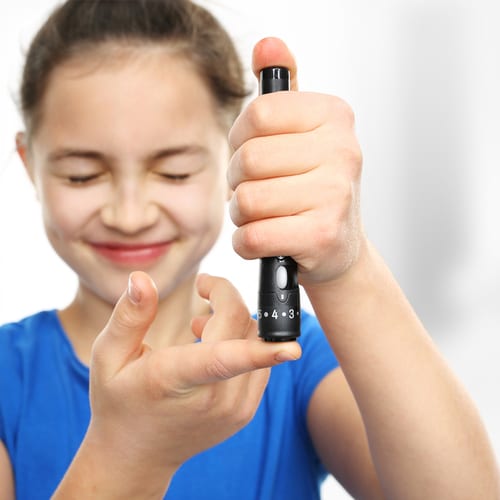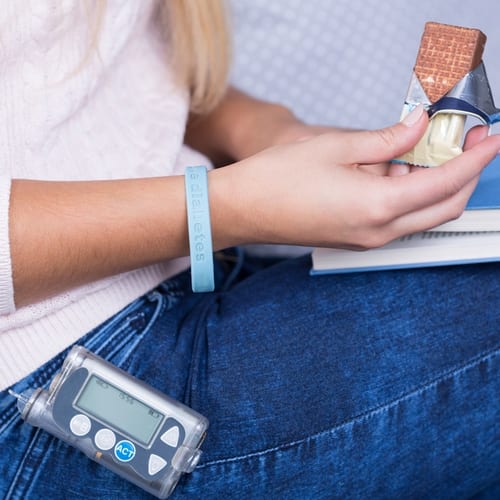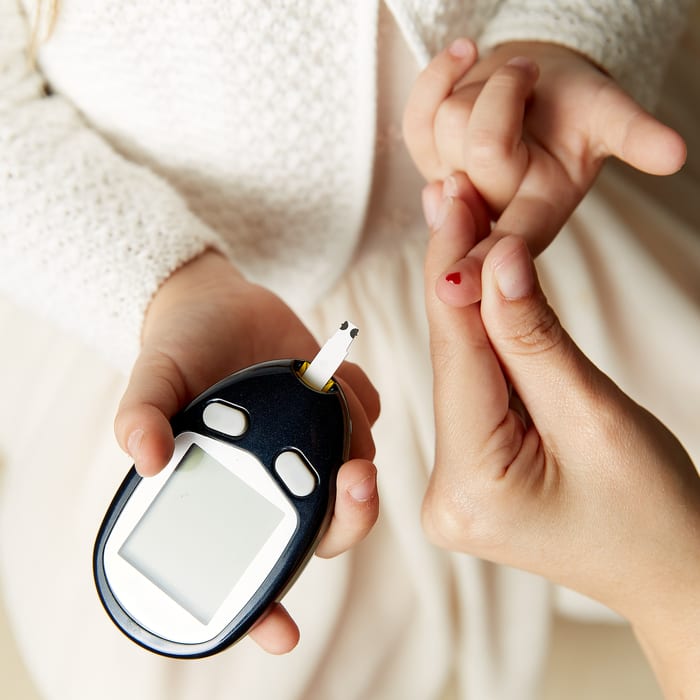Type 1 diabetes (T1D) is a disease that is marked by the body’s inability to manufacture insulin. Without insulin, the body cannot process the glucose from the food we eat. The result is that glucose levels rise dangerously high which can lead to a variety of serious health problems. There is currently no cure for run-of-the-mill diabetes with no complications, but the disease can be managed with daily doses of insulin. Type 1 diabetes affects some 450,000 U.S. children.
Type 1 diabetes is scary for parents of newly diagnosed children and their parents. The disease is unfortunately, all too common. Each year, some 13,000 children are diagnosed with type 1 diabetes in the United States, alone. There’s no magic wand to wave type 1 diabetes away, but the disease can be controlled and managed, with careful attention.
Diabetes affects the way the body uses glucose, which is a type of sugar in the blood. Glucose is a byproduct of the food we eat. Most people use this glucose as the main source of energy to fuel the various functions of the body.
After eating a meal, the body breaks down food into nutrients, such as glucose. These nutrients are released into your bloodstream by way of the gastrointestinal tract. This causes the level of glucose in the blood to rise after a meal. In healthy people, this rise in the level of glucose, or blood sugar, tells the pancreas to make a hormone called insulin, and to release this hormone into the bloodstream.
Type 1 Diabetes and Insulin
In people with type 1 diabetes, however, the body stops making insulin. This makes it impossible for the body to get energy from glucose-producing foods, without help. Since the body can’t use glucose without insulin, glucose remains in the bloodstream, with blood levels of glucose rising higher each time food is eaten.
An easy way to understand the role of insulin is to think of it as a key that unlocks the potential of the glucose we get from the food we eat. Insulin unlocks the “doors” of the blood cells, letting the glucose in. When there is no insulin, it’s like not having the key to the door: the glucose can’t enter the cells. That means the glucose remains in the bloodstream, unused. As blood glucose rises, a number of health problems can occur.
Type 1 diabetes used to be called juvenile diabetes, or insulin-dependent diabetes. This type of diabetes occurs when the body attacks itself, and the immune system destroys the cells in the pancreas responsible for producing insulin. Once these cells are destroyed, the body has no way of making insulin, ever again.
Type 1 Diabetes Causes
No one knows why this autoimmune response, of the body attacking the pancreatic cells that make insulin, occurs. Scientists think it may be partly genetic, running in families. There is probably at least one more factor that causes type 1 diabetes. It could be a virus or something like a virus that causes the body to attack itself.
As it stands, there is no practical way to prevent type 1 diabetes. There is also no way to know in advance who will contract the disease. This means that a child or adult can’t be said to have done something to cause the disease.
Once someone has type 1 diabetes, that person will always have type 1 diabetes. The person with type 1 diabetes will need to treat the disease, every day, for his or her entire life. Children, teens, and adults with type 1 diabetes are dependent on daily doses of insulin to control their blood glucose levels. Insulin is given by injection or with a pump.
Sometimes the symptoms of type 1 diabetes are subtle. It can take a while for a parent to figure out that a child is sick, which means it can take time for the child to be diagnosed with type 1 diabetes. Type 1 diabetes can develop over time, or all of a sudden.
Type 1 Diabetes Symptoms
Here are some common early symptoms a parent might see in a child with type 1 diabetes:
- Pees large amounts, often. When the body fails to make insulin, the kidneys try to flush out the excess glucose in the blood by causing the child to urinate (pee) frequently and in larger amounts than usual.
- Extreme thirst. Because the child is peeing so much and so often, dehydration (loss of body fluids) becomes a problem. The child become very thirsty, to offset the drying effect of all that peeing. The child with type 1 diabetes will seem to constantly want drinks. This is an effort to keep body levels of fluids in balance.
- Weight loss or lack of weight gain as the child grows. The child eats plenty, but is either losing weight, or not gaining as is normal in a growing child. Children and teenagers who develop type 1 diabetes seem to eat more than usual, yet stay the same or lose weight. This happens because the body can’t access the glucose in the body for fuel. The result is that the body begins to use its fat stores, and even breaks down muscle in its effort to feed its starving cells.
- Tired much of the time. Since the body can’t access glucose for fuel, the child gets no energy from food, and feels tired.
Uncommon Symptoms
Less common early symptoms of type 1 diabetes include:
- Bedwetting in a child who had been dry at night.
- A vaginal yeast infection (Candida) in a girl who has not yet reached puberty.
Serious Symptoms
If these early symptoms of type 1 diabetes go unnoticed and untreated, more significant symptoms can occur. These symptoms are the result of a build-up in the blood of chemicals called ketones. When ketones build up in the bloodstream of a person with type 1 diabetes, this results in a serious condition called diabetic ketoacidosis (DKA). The symptoms of diabetic ketoacidosis can be mistaken for those of appendicitis, or the flu. Here are common symptoms of diabetic ketoacidosis:
- Stomach pain
- Nausea
- Vomiting
- Breath smells like fruit
- Difficulty breathing
- Loss of consciousness
Adult Complications
Type 1 diabetes can cause long-term health problems in adults, though not in children. These health issues come with having type 1 diabetes for a long time. Children and teens haven’t had diabetes long enough to have these issues. The kinds of health problems that comes from having type 1 diabetes for many years, also tend to happen in cases where the person wasn’t doing a good job of managing the disease. Here are some of the common health problems that are associated with type 1 diabetes over the long-term:
- Heart disease
- Stroke
- Kidney damage
- Vision impairment
- Various problems with the blood vessels, nerves, and gums
The important thing to know about type 1 diabetes is that it can be controlled, and the risk greatly reduced through proper treatment. It’s also easy to diagnose diabetes through a simple blood test that measures the level of glucose in the blood. Children, and especially teens with type 1 diabetes, may need lots of support and encouragement. They don’t like feeling different than their peers and may take risks with treatment. For this reason, researchers are always looking into new and easier ways of administering insulin, such as the insulin pump.
If your child’s doctor suspects or makes a diagnosis of type 1 diabetes, your child may be referred to a pediatric endocrinologist. A pediatric endocrinologist is a doctor who is a specialist in childhood diseases having to do with the endocrine system, for instance diabetes. The endocrine system is made up of the glands in the body, such as the pancreas. In type 1 diabetes, the pancreas sustains damage and stops producing insulin.

Children and teens can find it painful or demanding to test their blood glucose. Testing blood glucose involves producing a drop of blood to test for glucose by means of a pin prick. Children can feel the same way about insulin injections as a way of replacing the body’s lack of insulin. It’s also awkward for teens and children to treat their disease when their friends are around. It can be a challenge to find privacy for treating type 1 diabetes, and (insensitive) peers might make them feel uncomfortable about their differences.
Type 1 Diabetes Medical Advances
Medical advances have been made to make treatment of type 1 diabetes easier on children and teens. There is now, for instance, the insulin pump, which mimics the natural way the pancreas reacts to glucose in the bloodstream in healthy people. The insulin pump is a portable device that attaches to the body. The pump delivers a continuous amount of short-acting insulin by way of a catheter that is placed under the skin. The device takes the place of multiple injections over the course of the day. The user also has more control over blood glucose levels because the insulin pump can be programmed to give faster or slower rates of insulin at specified times, such as while the user is asleep. The pump is slightly larger than a pack of cards.

Another device in the works is the artificial pancreas. This device will be implanted or wearable and is an insulin pump that is connected to a device that automatically measures the blood glucose levels at all times.
Not relevant to most children and teens with type 1 diabetes is the major step of a pancreas transplant. While the transplant can cure diabetes, and remove the need for blood glucose monitoring and treatment, the transplant comes with the potential for a host of problems. In general, a person is only considered for a pancreas transplant when there are complications from diabetes, for instance, kidney damage necessitating dialysis. A pancreas transplant is often, in fact, done in conjunction with a kidney transplant. The child who would be considered for a pancreas transplant would be rare, indeed.
While no one thinks it a good thing for a child or teen to develop type 1 diabetes, it is not the worst thing in the world, and certainly not a death sentence. It helps to maintain a positive attitude as you guide your child through learning how to adapt to having a chronic disease. If your child sees you can cope, he or she will understand that everyone has challenges, and the main thing is to meet them face on, with bravery.
Does your child have type 1 diabetes?
How did you feel when you learned your child has type 1 diabetes?
Does your child with type 1 diabetes take risks with monitoring blood glucose levels and treatment? How have you coped with this situation?
Found what you just read useful? Why not consider sending a donation to our Kars4Kids youth and educational programs. Or help us just by sharing!
